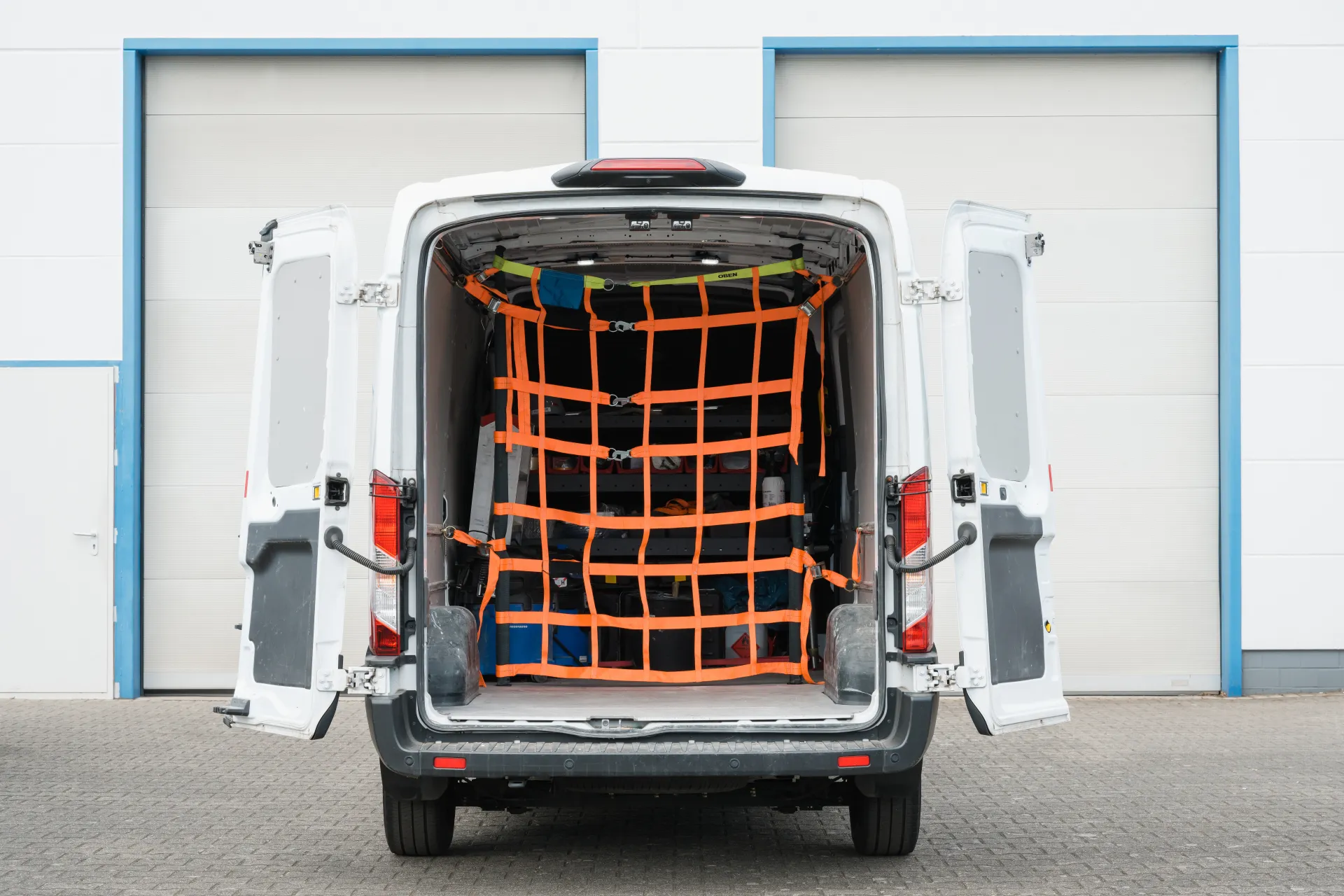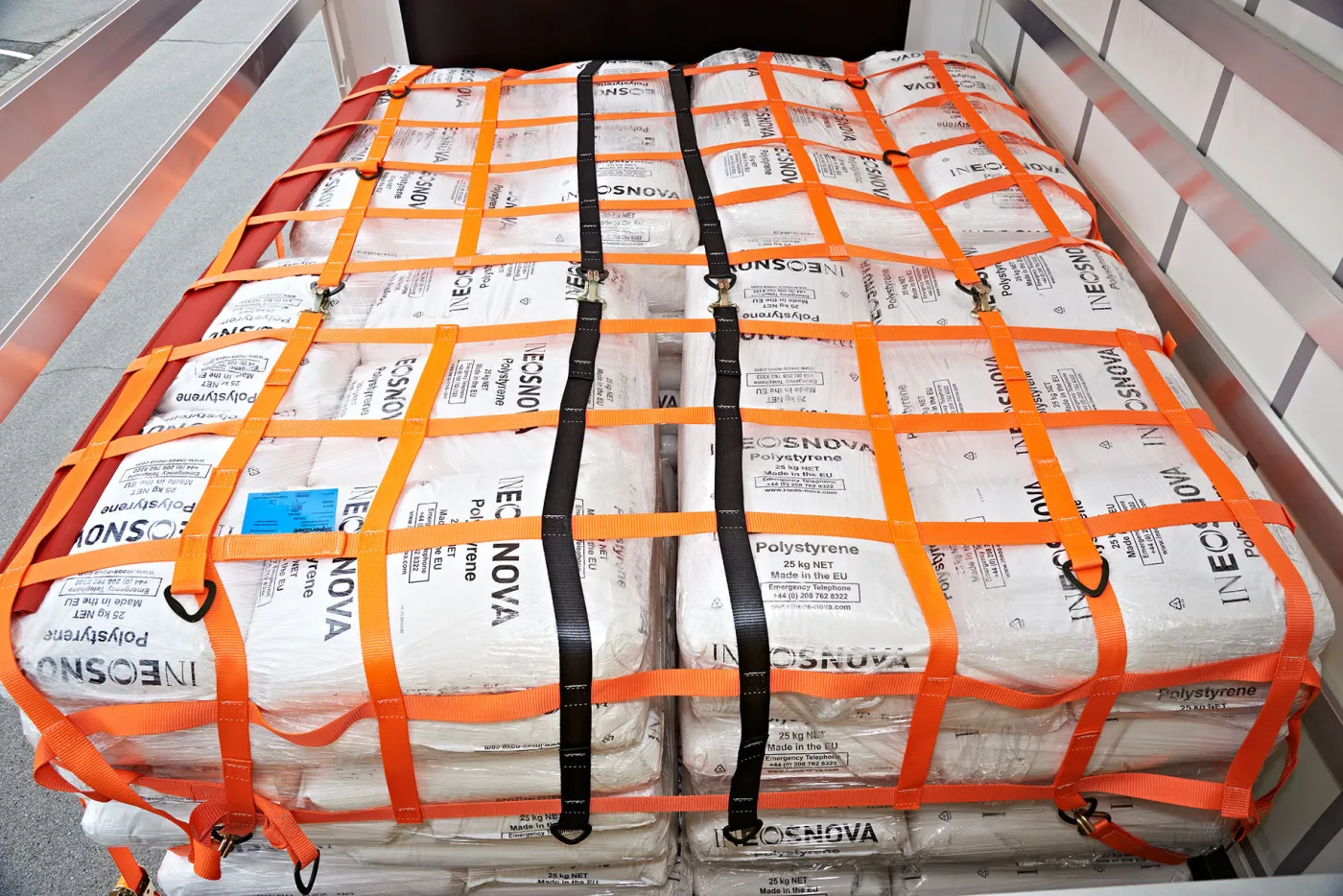The SpanSet network configurator: "In principle, any customer can use the configurator."
Interview with Ralf Schmitz, Product Manager at SpanSet Germany
Mr. Schmitz, what does the net configurator from SpanSet offer?
Ralf Schmitz: The configurator simplifies the ordering process for our customers and for us. It can also prevent errors in the ordering process. As a starting point, we are dealing with standard nets. Individual configuration is necessary because the nets required for load securing vary depending on the type of vehicle – for example, in terms of length and width or the positioning of tie-down points. Additionally, the mesh size is important; it makes a difference whether a courier is securing small packages or a craftsman is securing his mobile machines. Furthermore, many companies desire nets in their corporate colors and with their logo.
advertising on a closed van
Marking and securing of property.
Which customer group is the configurator aimed at?
Basically, any customer can use the configurator – even if they only want to design a single safety net. However, in developing the configurator, we primarily considered the customer group that orders 50, 100, or more units: freight for.
Do you have to be a load securing specialist to use the net configurator?
No. Although our offer is primarily aimed at buyers, fleet operators, and other individuals who are professionally involved in transport and logistics, the configurator is self-explanatory and therefore also suitable for customers who do not deal with load securing on a daily basis. Additionally, we have our service team at SpanSet, which continues to assist with the configuration of nets as before.
Can the nets be used for both tie-down lashing and direct lashing, and does it make a difference in the configuration?
The mask works identically in both cases. Under certain conditions, the nets can be used for both lashing down and direct lashing. Whether this is possible in the specific application case depends, among other things, on whether the tensioning elements required for direct lashing have been taken into account during configuration. Of course, it is important to ensure that, especially in direct lashing, the LC value is relevant. This refers to the maximum force that may be applied to the lashing device.

Fig. 1: PackNet - separation net

Fig. 2: PaXafe - load securing net